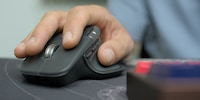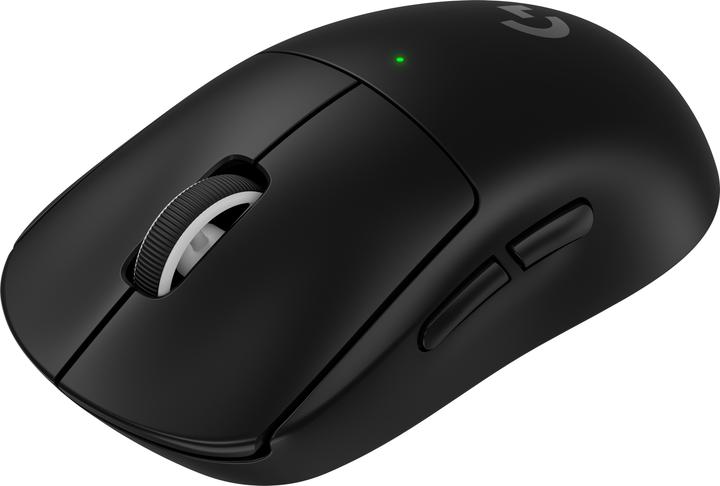

Good, but boring – Logitech’s G Pro X Superlight 2
Logitech’s Pro X Superlight 2 is better than its predecessor. This improvement was necessary to keep up with the competition. Is the result a success? Yes. But it’s boring, too.
The big changes in the Pro X Superlight 2 can’t be seen from the outside. The only difference to its predecessor is the USB-C port. No more micro USB? You’ve heard right. This should have happened years ago. Welcome to 2018, Logitech G.
There are a few nice changes on the inside of this mouse, too. The new switches are particularly great. The polling rate of 2000 Hertz, however, will probably only be noticeable for a few gaming setups. Overall, the Superlight 2 is a good gaming mouse.

Here are all Superlight 2 models.
No change to the shape
As the shape and size of the Superlight 2 haven’t changed, the same applies as I wrote about its predecessor. If you don’t have XXL hands, the mouse should fit well in your hand – in palm, claw and fingertip grip. My hand measures 19 × 10.5 cm and palm grip gets uncomfortable after some time. I prefer claw grip.
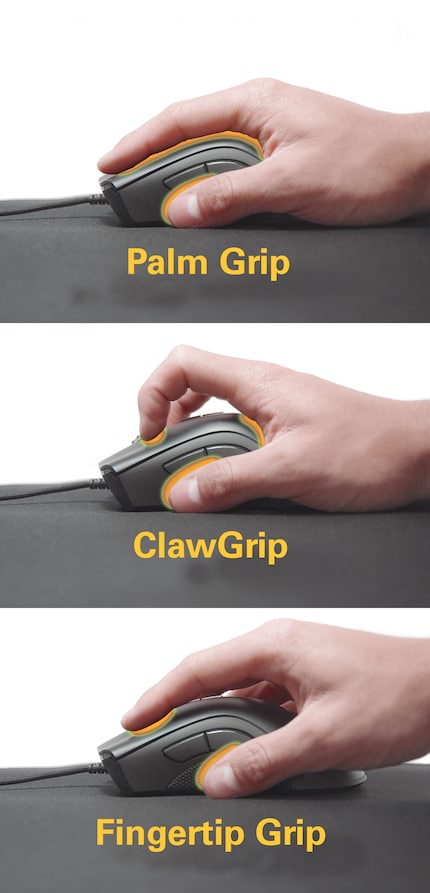
Source: Shutterstock
Compared to its predecessor, the Superlight 2 has slimmed down by three grammes. It weighs just under 60 grammes. Since nothing has changed on the outside, it must have lost some weight on the inside.
Good manufacturing
As with the predecessor, Logitech has used ABS plastic to make the shell. The mouse has a smooth surface. If it’s too smooth for you, Logitech provides grip tape to stick on. Even though the surface is coated, the black mouse I’m testing magically attracts fingerprints.
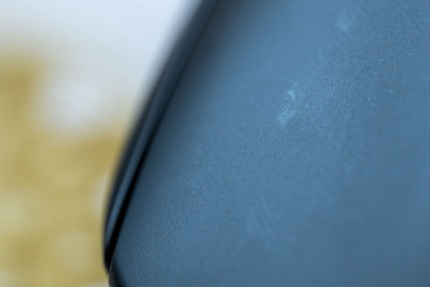
Source: Kevin Hofer
The mouse is well made – no creaking or rattling, even when I move it fast. However, the shell feels softer and I unintentionally trigger the side buttons when I apply strong pressure from the side. The keycaps are another shortcoming, as they move sideways. However, these observations don’t limit the functionality of the Superlight 2.
Logitech switches
Gone are the days when Logitech relied on switches from third-party manufacturer Omron. The Superlight 2’s equipped with Lightforce hybrid switches – opto-mechanical switches made by Logitech itself. The mouse features a fully fledged mechanical switch, which can also be triggered optically instead of mechanically. According to the manufacturer, this combines the advantage of optical switches with the feel of mechanical ones.
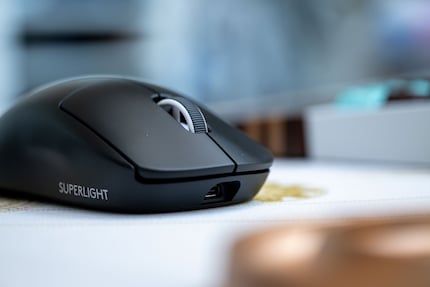
Source: Kevin Hofer
The advantage of optical switches compared to mechanical ones is that they have no debounce delay. Debounce delay refers to the milliseconds that a mechanical switch needs to return to its starting position before it can be triggered again. Another advantage of optical switches is that there shouldn’t be any accidental double-clicks. Having said that, this did occasionally happen with the Omron switches.
In my test with the Superlight 2, the buttons trigger reliably. No matter where I press on the main buttons, the Superlight 2 always triggers at the same time and requires the same amount of pressure. The only drawback is they show slight pre-travel. I prefer no travel on the main buttons.
The side buttons are well positioned. I can easily reach them with all three grip types. Logitech has kept mechanical switches for the side buttons. I like the clicking experience.
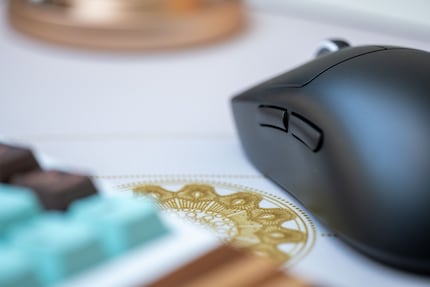
Source: Kevin Hofer
The scroll wheel’s rubberised and offers good grip. However, it doesn’t lock in place well and feels a bit unstable. The good news is it’s very quiet when scrolling and clicking.
Good battery life
You can connect the Superlight 2 with a cable or wirelessly. According to Logitech, the battery offers a runtime of 95 hours when the mouse is moved constantly. My test confirms this. That’s 25 hours longer than its predecessor. For a small and lightweight mouse, Logitech is on a par with the competition when it comes to battery life.
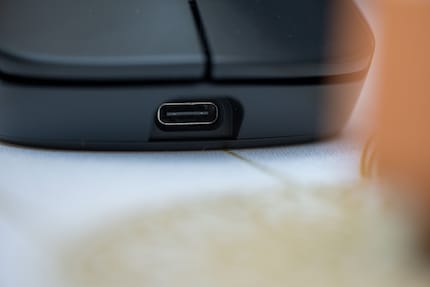
Source: Kevin Hofer
The supplied USB-A to USB-C cable is 1.9 metres long and rubberised. It’s fine, but I wouldn’t want to use it when I’m playing against others, as it’s too stiff and the rubber coating is annoying. You’re better off charging the mouse before your gaming session.
Gliders with room for improvement
Like almost all manufacturers, Logitech uses PTFE, better known as Teflon, for the gliders. There are three gliders – a large one at the front, a ring around the sensor and horseshoe-shaped one at the back. Despite the same material, I have the impression that they have more resistance than those of the competition such as those of the Deathadder V3 Pro by Razer. The gliders of the Superlight 2 are thinner.
If you want more gliding surface, you can replace the lid for storing the dongle with one that’s equipped with an additional glider. This is particularly useful if you exert a lot of pressure on the back of the mouse.
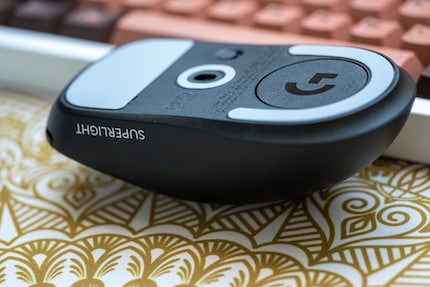
Source: Kevin Hofer
There’s bad news for fans of aftermarket gliders: Logitech has slightly changed them in this model, so you can’t attach your Superlight gliders to the Superlight 2.
Upgraded sensor
Not only the Superlight itself has been given a numerical upgrade, but the sensor, too. The Superlight 2 is equipped with the Hero 2, which offers up to 32,000 counts per inch (CPI). CPI stands for how many pixels the cursor moves with every inch the mouse is moved. The predecessor achieved 25,600 CPI. However, nobody really needs that amount – I don’t know anyone who plays over 3,200 CPI.
According to Logitech, the maximum speed is more than 500 inches per second (IPS) and the acceleration is 40G. The Hero 2 should therefore be able to track speeds higher than 500 IPS without losing control. The same applies to accelerations greater than 40 times the earth’s gravity. Sounds very cryptic to me. What’s important for you to know is the Superlight 2 will easily keep up with your movements, even in heated battles.
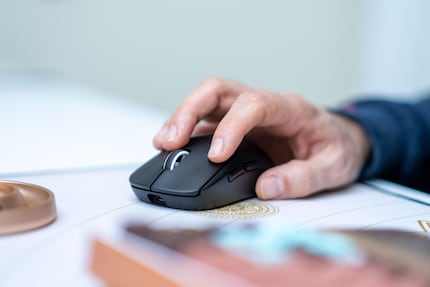
Source: Kevin Hofer
The polling rate has also been upgraded. It’s at 2,000 Hertz (Hz), which is twice as much as what its predecessor offered. In recent years, 1,000 Hz has been the norm. For about a year and a half, more and more manufacturers have been launching mice with a higher polling rate. However, the advantage of a polling rate higher than 1,000 Hz is small. You’ll only notice the difference between 1,000 and 2,000 Hz with a high-refresh monitor at 240 Hz – if at all. If you’re not a pro, you don’t need this high a polling rate. Still, it’s nice that Logitech has upgraded the Superlight 2, as it serves the few who can actually benefit from it. If you’d like to find out more about polling rate, I recommend this video by optimum.
The MouseTester program helps me take a closer look at the CPI precision, polling rate, speed and acceleration.
CPI precision
I take every measurement three times and calculate the average. To test CPI precision, I move the mouse ten centimetres along a ruler while the program records the CPI. The closer the recorded CPI is to the set CPI, the better.
The built-in sensor is impressive across the board. As a rule, I classify anything under five per cent deviation as very good. In this case, it’s no more than 2.5 per cent.
Polling rate consistency
The polling rate specifies the interval at which the mouse sends information to the PC. The more often this happens, the faster keystrokes and movements can be processed. At a polling rate of 1,000 Hz, the update time is one millisecond. In other words, a polling rate of 1,000 Hz means the mouse sends information to the PC a thousand times per second. The dots on the following graphic show how long it takes for the signal to be updated. The closer to the set polling rate, the better.
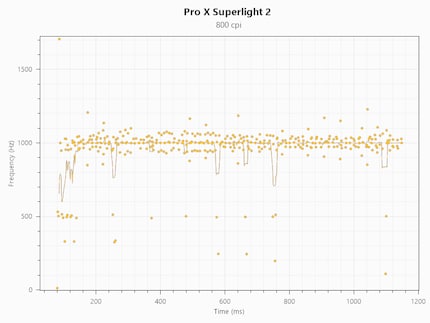
The polling rate is consistent for the most part. However, there are outliers, mainly towards the lower end of the scale. These are cases in which it takes longer than a millisecond for the signal to be updated. Many current gaming mice solve this better.
I repeat the same test with a polling rate of 2,000 Hz and again observe some outliers, but this time towards the upper end of the scale. Interesting. Most of the time, the polling rate is 2,000 Hz. However, MouseTester also displays some around 20,000 Hz.
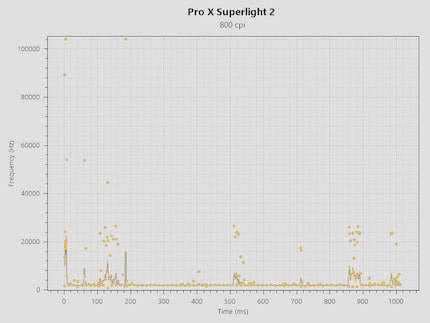
Tracking speed
A mouse needs to reproduce fast movements correctly. My test involves moving the mouse back and forth quickly. MouseTester registers these movements and displays them in a diagram. The dots represent the measurements – the closer they are to the line, the more accurately the mouse registers my movements. Movements on the Y-axis are marked in red, those on the X-axis in yellow.
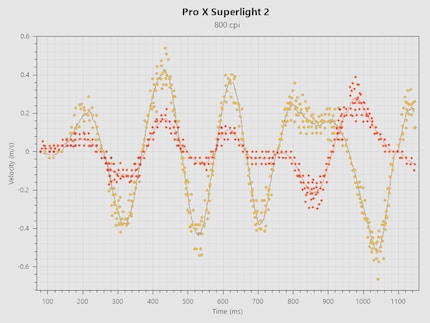
There are hardly any deviations – a maximum of about 0.06 metres per second. This is a very good result.
Acceleration
If I move the mouse quickly in one direction and then slowly back to its original position along the same line, the same CPI should be registered by the sensor. To test this, I quickly move the mouse diagonally from a point A at the top right to a point B at the bottom left and then slowly drag it the exact same way back to the original point A. MouseTester registers the movement. Ideally, all measurements should be on the same line.
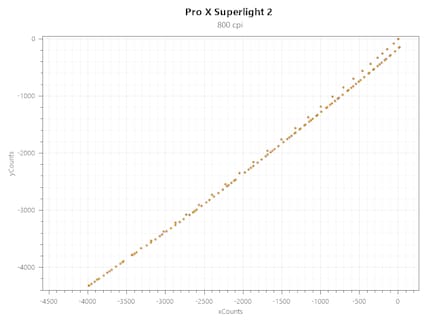
The Hero 2 doesn’t do very well at this task. The two lines don’t overlap towards the middle as well as at the end. This means the Superlight 2 can’t track fast movements exactly.
Simple configuration
The Superlight 2 can be configured in the Logitech G Hub, which allows you to reassign the buttons, adjust the CPI and polling rate as well as calibrate the sensor. These settings can be stored in the on-board memory. You can also load additional presets for or from others.
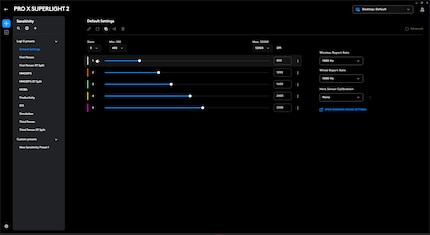
Source: Kevin Hofer
You can also update the mouse firmware or select whether the mouse triggers in hybrid mode or only optically. This saves some battery power. It’s not specified when exactly the mouse triggers optically and when mechanically. I assume it’s triggered optically in games and mechanically in other applications and when the battery is low.
Conclusion: the Superlight 2 is a good gaming mouse, too
The original Superlight is already a good gaming mouse – and Logitech G has done a lot of things right with the Pro X Superlight 2. The manufacturer improved key areas and offers new features such as a higher polling rate and USB-C. Nevertheless, the Superlight 2 is boring. It looks exactly the same and it doesn’t offer anything out of the ordinary.
If you have the original Superlight and it still works well, there’s no need to get the new one. Unless you absolutely need or want the higher polling rate or USB-C – or if you’re struggling with unintentional double-clicks. The latter should no longer happen with the Superlight 2 thanks to its hybrid switches.
All in all, the Superlight 2 offers a solid overall package. But so does its predecessor, which costs a lot less. Therefore, here’s my advice: if you have over 100 francs / euros to spare for a new mouse and you like the Superlight 2, go for it. If you have less than 100 francs / euros to spare, the predecessor is still a good choice today.
From big data to big brother, Cyborgs to Sci-Fi. All aspects of technology and society fascinate me.


